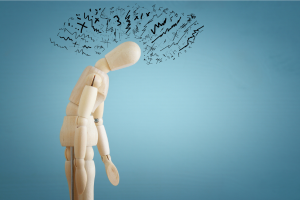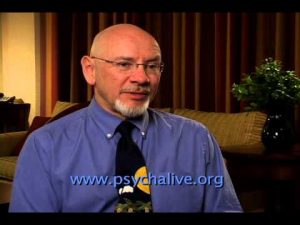A Traumatized Nation
 In the wake of the Newtown, Connecticut massacre, we take pause and try to make sense of a senseless act. Unfortunately, mass murder has become all too frequent in recent years. A report by Mother Jones showed, “since 1982, there have been at least 62 mass murders carried out with firearms across the country, with the killings unfolding in 30 states.” Interestingly, mass murder is on the rise in our country, while individual homicide rates are on the decline. FBI statistics show that single-victim gun killings have decreased over 40 percent since 1980. However, attacks with four or more victims continue to rise. We, as a nation, not only mourn the loss of the latest 27 Connecticut victims, but also continue to mourn the other departed. We, as a nation, again face the impact of trauma and together try to move forward from immeasurable and indescribable loss.
In the wake of the Newtown, Connecticut massacre, we take pause and try to make sense of a senseless act. Unfortunately, mass murder has become all too frequent in recent years. A report by Mother Jones showed, “since 1982, there have been at least 62 mass murders carried out with firearms across the country, with the killings unfolding in 30 states.” Interestingly, mass murder is on the rise in our country, while individual homicide rates are on the decline. FBI statistics show that single-victim gun killings have decreased over 40 percent since 1980. However, attacks with four or more victims continue to rise. We, as a nation, not only mourn the loss of the latest 27 Connecticut victims, but also continue to mourn the other departed. We, as a nation, again face the impact of trauma and together try to move forward from immeasurable and indescribable loss.
It is the human condition to look for blame and reason when faced with tragedy. We look for answers. We look for justice. The relationship between mental illness and violence is fast to the surface in the wake of such events. Though media reports discuss the mental health of recent mass shooters, these reports do not share the full story of mental illness and violence. The individuals responsible for the recent mass murders do not accurately represent mental health consumers, nor do they show the true relationship between mental illness and violence. It is important to note here, that the information concerning Adam Lanza’s mental health is still developing. There are reports of Lanza having Aspergers, a type of autism, however this condition has no found link to violence. There is a link between mental illness and violence – but not in the way many believe it to be.
The public’s misconception of people with mental illness being prone to violence is far from accurate (Link et al, 1999). Persons with mental illness are more likely to be the victims of crime – not the perpetrators. Teplin (2005) published the definitive analysis of crime victimization and mental illness. It was found that “more than one quarter of persons with SMI (Serious Mental Illness) had been victims of a violent crime in the past year, a rate more than 11 times higher than the general population” (pp. 911). When breaking down victimization by crime type, the results are staggering. “Depending on the type of violent crime (rape/sexual assault, robbery, assault, and their subcategories), prevalence was 6 to 23 times greater among persons with SMI than among the general population…these victimizations can heighten anxiety and a sense of vulnerability, which, in turn, may worsen psychiatric symptoms” (Teplin, et al, 2005, 917).
Since de-institutionalization, the community-based mental health system has been disjointed and fractured. The lack of funding and program structuring has left a nameless mass without coverage, care, and continuity of mental health services. Further, the stigma of mental illness keeps many from seeking help for himself or herself, or a loved one. Of course, once help is sought after, it is pricey to obtain and maintain. The financial strain of counseling and medication leaves many without the care they need. This results in a vulnerable population becoming prey for crime. As the research shows, the over-representation of this group as crime victims impacts psychiatric symptoms and may lead to further stigmatization.
Of great significance in the recent tragedies is the suicide of the offender. Incidents of murder/suicide are increasing. In an analysis of 62 murder/suicide incidents, it was found that 36 shooters killed themselves after taking the lives of their victims. This finding does not account for the high likelihood of ‘suicide by cop’ – the act of intentionally provoking officers to fatally injure you. In this time of grieving and loss, we must not only educate ourselves about the mental health of this assailant but also the mental health of the impacted community and our nation.
The community of Newtown has been subjected to trauma that very few of us can imagine. As they grieve the loss of their children and neighbors, we, as a country, are mourning with them. The American Psychological Association (APA) defines trauma as “an emotional response to a terrible event… Immediately after the event, shock and denial are typical. Longer term reactions include unpredictable emotions, flashbacks, strained relationships and even physical symptoms like headaches or nausea.” Trauma need not come from direct experience with an event. Trauma may occur from hearing of a significant incident, such as this recent tragedy. Vicarious trauma, an indirect exposure to trauma, occurs when a listener hears of an incident lived through by another person or group of individuals. It is during times of tragedy that we all are at risk for trauma. The painful and significant trauma experienced by direct witnesses and family members inflict a different, more extreme, form of trauma than those hearing of the incident second hand. Be it the reminder of a past event in our own lives that triggers trauma or hearing of the recent tragedy and lost victims, we may experience the symptoms of trauma. We must be diligent in recognizing the signs of crisis and trauma and assist those in need of care.
The events in Newtown not only lead us to reflect as a nation about the accessibility to fire arms or mental health care. It requires us to take a look at our culture and our relationship with violence. A decade-old study of violence in the media found that children’s programs in the 1980s featured 18.6 violent acts per hour. By 1990, children viewed approximately 26.4 violent acts each hour (Gerbner, 1990). The numbers have only increased in the last decade. Has the continued exposure to violence further traumatized us, or has it desensitized us to crime? This debate may never be settled. What we can all agree upon is that the amount of violence in this culture, be it in our programming, schools, or streets is unacceptable. It has been unacceptable for quite some time. The Newtown tragedy leaves us with many questions. How do we come together to recognize and heal the trauma felt in Newtown and across our nation? How do we connect our friends, neighbors, sons, and daughters to mental health care? The answers lie within and when connecting to others. We can de-stigmatize mental illness and bring access to healthcare into personal and political conversations. This latest loss and our ability to move forward is perhaps best described by Rose Kennedy. Her words beautifully describe life after trauma and tragedy, “It has been said, ‘time heals all wounds.’ I do not agree. The wounds remain. In time, the mind, protecting its sanity, covers them with scar tissue and the pain lessens. But it is never gone.”
Tags: gun control, newton, school shooting, violence prevention









Nicely said Bonnie. Thanks.
David
I agree with the “Nicely said” My apologies for not getting to this earlier.
Hi Bonnie,
Thanks for writing this compassionate consideration. I came across https://www.psychalive.org at the wisdom 2.0 conference recently.
Have you seen http://www.da-peace.org/
“Every once in a while a prophetic voice is raised in the midst of crisis and chaos. It cuts through the walls of indifference, neglect, and just plain ignorance, and exposes the heart of the issue …. The voice of the World-Friend, Adi Da, which speaks to us through [Not-Two Is Peace] addresses none other than the issue of our collective survival”.
…… ERVIN LASZLO, Author, President, Club of Budapest
Adi Da Samraj wrote Not-Two Is Peace out of compassion for humanity’s current plight. Not-Two Is Peace contains Adi Da’s vital wisdom on the root of human conflict and the limits and errors of conventional religion and politics. He points to the necessity of re-establishing human civilization based on principles of mutual trust, cooperation, tolerance, “prior unity”, and the limitless participation of all humankind in transforming its own destiny.
Also included is Adi Da’s “radical” argument for transcending egoity, along with his urgent call to found the Global Cooperative Forum, a new type of human order. This forum will allow humankind to become conscious of itself and act as one great coherent force—the only force capable of requiring and implementing systemic changes the world needs.